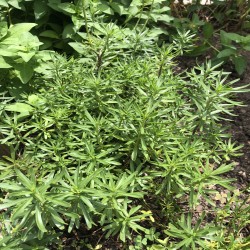Candytuft
Iberis sempervirens
AKA: Evergreen candytuft, clown’s mustard, Gruetzblume, teraspic
——————————
Historically Used to Treat: Gout, arthritis, rheumatism, asthma, heart problems, gas, digestive upset, scurvy, cramping, blood disorders, made in to a bitter digestive tonic
Other Uses: Largely ornamental
——————————————-
Commonly called Iberis. The “Candy” in the name candytuft does not come from the food, but Candia (the historic name for Iraklion on the Isle of Crete, a region where Candytuft is native). (1)
Cultivated first in England by herbalist John Gerard (1545-1612 CE), who received the “seeds of the candy-mustard” in 1587 from a friend, Lord Edward Zouche. (Our Garden Flowers by Harriet Keeler, pg 213-214). “Zouche was probably indirectly instrumental in introducing candytuft to early colonial settlements in America since he was [an investor] of the Virginia Company under King James. (The Morning Star, and the Second Charter of Virginia)
Image Gallery




